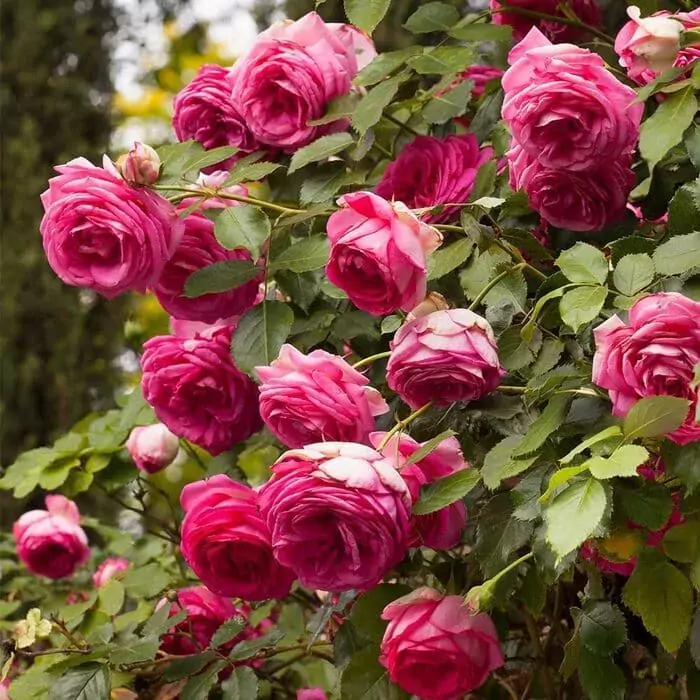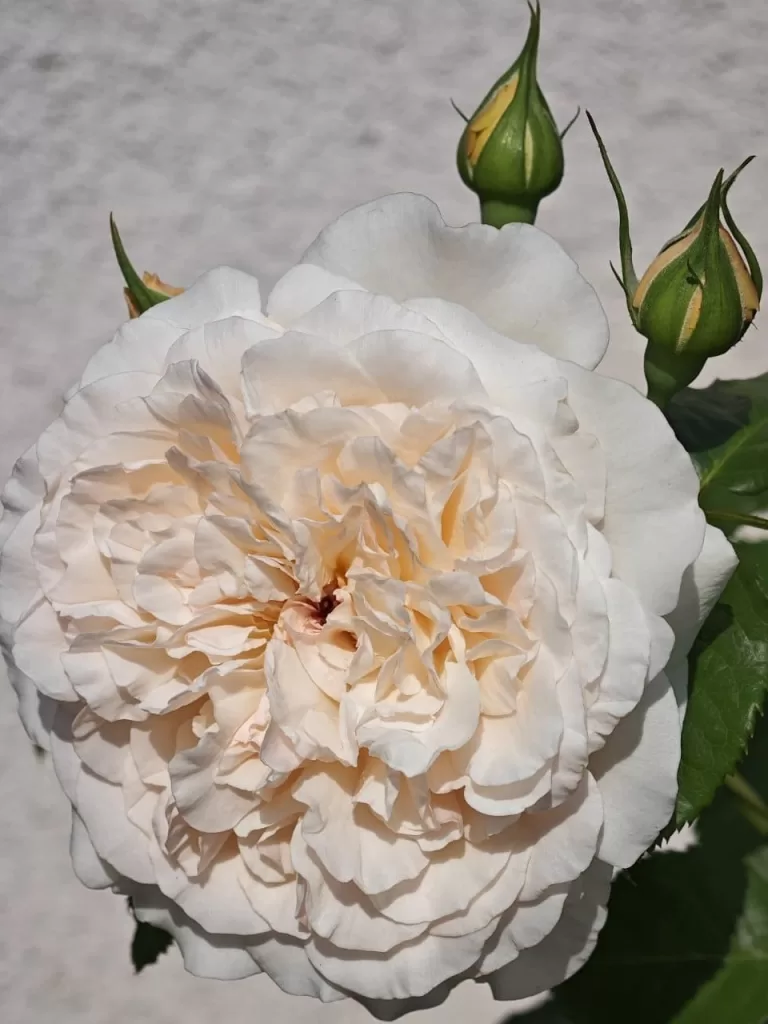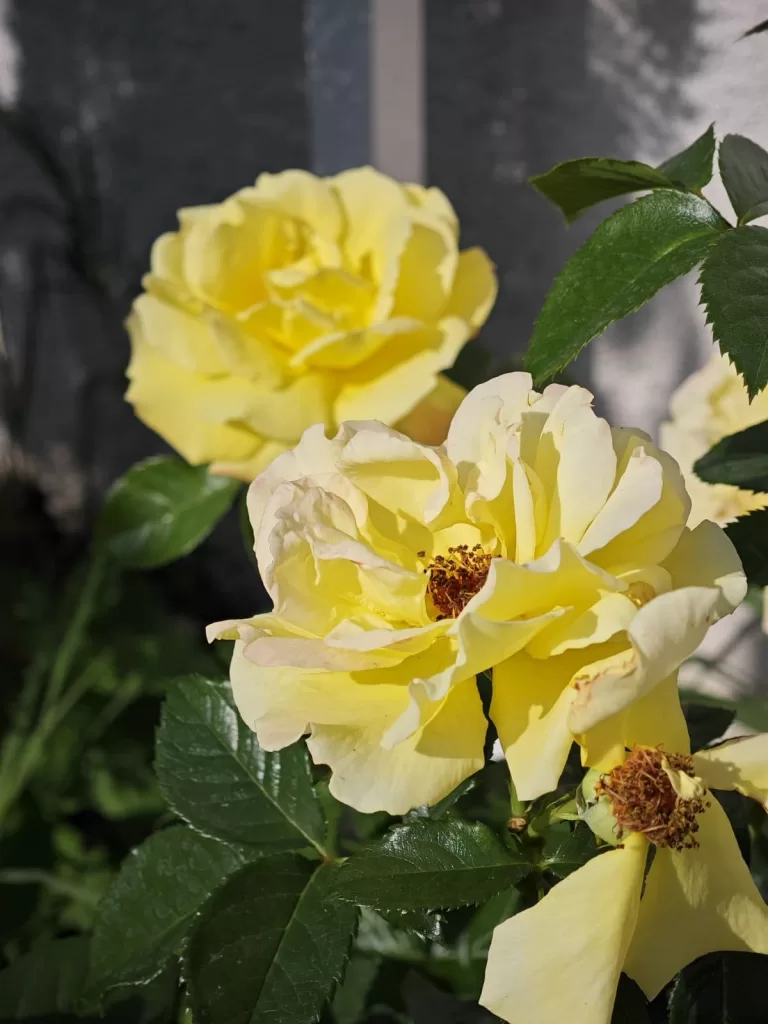Climbing roses can elevate your garden’s beauty with lush blooms and vertical elegance. However, a thoughtful approach and careful preparation are essential for successful growth. This comprehensive guide will walk you through the best practices for planting climbing roses and how to sidestep frequent errors that gardeners encounter.
Choosing the Perfect Location for Climbing Roses
For your roses to thrive, location is everything. Here’s what you need to keep in mind:
Key Location Factors
- Sunlight Exposure: Aim for at least 6-8 hours of full sunlight daily. Roses are sun-loving plants and need consistent light for vibrant blooms.
- Airflow: Good air circulation helps prevent fungal diseases and keeps plants healthy.
- Space: Ensure the plant has enough room to expand without competing with other plants or structures for space.
Garden pro tips
Avoid planting near dense shrubs or large trees, as they may cast too much shade and compete for nutrients.
The Best Time to Plant
- Early Spring or Fall: These times provide mild weather conditions, allowing the roots to establish before facing extreme temperatures.
- Avoid Midsummer Heat: Planting in the intense summer sun can stress newly planted roses and impede growth.
In colder areas with severe winters, spring planting is ideal, as it gives the plant time to acclimate before winter arrives.

Preparing the Soil
Ensuring the soil is nutrient-rich and well-prepared can make all the difference in your rose garden.
Soil Type and pH Balance
- Ideal Soil: A loamy soil mix that holds moisture well but drains effectively is preferred.
- Optimal pH: Climbing roses best suit a slightly acidic pH of about 6.5. Use a soil pH meter.
Soil Enhancements: Incorporate organic materials like compost or aged manure to boost fertility and structure. This will help roses absorb nutrients efficiently.
Pairing Climbing Roses with Companion Plants
Companion planting not only adds visual appeal but can also offer protective benefits.
Top Companion Choices
- Lavender: Complements roses with contrasting purple color and repels pests like aphids.
- Catmint: Acts as a natural pest deterrent and provides ground cover.
- Foxgloves: Adds vertical interest and attracts beneficial pollinators.
Companion Plant Tips: Choose plants with similar water and sunlight needs without competing for space and resources.
Read more about rose companions here.

Rose de Tolbiac
Step-by-Step Guide: Planting Climbing Roses on a Trellis
A trellis provides structure and supports healthy growth for climbing roses. Here’s how to plant them correctly:
- Position the Trellis: Ensure it’s securely anchored in the ground for stability.
- Dig the Planting Hole: Make a hole about 18 inches deep and wide enough to comfortably accommodate the roots.
- Place the Rose: Position the root ball so the graft union sits below the soil surface.
- Backfill: Fill in with soil enriched with compost to promote early growth.
- Tie Canes: Use garden twine to secure the canes to the trellis loosely. Train the stems horizontally to promote more flower-bearing branches.
Garden tips
Spread the canes in a fan-like pattern for even sun exposure and to encourage maximum blooming.
Avoiding Common Mistakes
Even experienced gardeners can make errors that hinder rose growth. Here’s how to avoid common pitfalls:
- Planting Depth Matters
The graft union should be just below the soil surface. If planted too deep, the plant can suffocate; it’s too shallow and vulnerable to frost damage.
- Skipping Pruning Regular pruning keeps roses healthy by preventing disease and encouraging better shape and bloom production. Prune in early spring to remove dead or weak wood.
- Over or Underwatering: Ensure a balanced watering schedule. Soil should remain moist but not waterlogged to avoid root rot or dehydration.
Post-Planting Care for Climbing Roses
Caring for your roses after planting is as crucial as the initial setup.
Initial Watering and Mulch Application
- Watering: Thoroughly water the base after planting.
- Mulch: Apply a 2-3 inch layer of mulch to retain moisture and deter weeds.
Feeding and Fertilizing
A balanced rose fertilizer can be applied during the growing season for optimal health and blooming.
Guiding and Training Climbing Roses for Best Growth
Proper training helps your roses develop into a breathtaking display.
How to Guide Canes
- Secure canes in a spread-out pattern to encourage total, even growth.
- Regularly check and adjust to prevent tangling and to maintain good airflow.
Ongoing Adjustments
Ensure new growth is consistently guided to avoid disorganized growth and optimize exposure to sunlight.
Pruning Climbing Roses for Maintenance
Yearly Pruning Schedule Plan to prune annually in early spring. Remove any dead wood and reshape the plant for balanced growth.
Deadheading:
Remove faded blooms throughout the season to stimulate further flowering.

Get Your Free Lunar Gardener's Calendar 2025!
Join the Lunar Gardening Revolution! Subscribe now to receive our exclusive Free Lunar Gardener’s Calendar for 2025. Harness the power of the moon to optimize your planting, nurturing, and harvesting.
Common Challenges and Solutions
Climbing roses, while rewarding, may face some common issues. Here’s how to handle them:
Dealing with Pests
Pests like aphids or beetles can pose a risk. Opt for organic insecticidal treatments or introduce beneficial insects like ladybugs for natural pest control.
Preventing Disease:
Watch for early signs of problems like black spots or mildew. Address promptly with fungicidal sprays and maintain good air circulation through regular pruning.

Ducat rose
Frequently Asked Questions
The ideal time to plant climbing roses is during early spring or fall when temperatures are moderate. Planting during these seasons minimizes transplant shock and sets the stage for robust growth.
Start with well-draining soil enriched with organic matter. Incorporate compost and a balanced fertilizer to ensure the soil is slightly acidic, crucial for healthy climbing roses.
Avoid overwatering, overcrowding, and planting in poorly drained soil. Neglecting proper pruning and support installation can also hinder growth.
Select a spot with at least 6 hours of direct sunlight daily and excellent air circulation. A well-chosen location helps prevent diseases and supports vigorous growth.
Provide sturdy support with trellises, arches, or pergolas. Secure the canes with soft ties to avoid damaging the stems.
Water deeply at the root zone and allow the soil to dry slightly between waterings. Overwatering is a common mistake that can lead to root rot.
Prune climbing roses immediately after planting to remove dead or weak canes and shape the plant for optimal growth.
Regularly inspect your plants, remove any affected foliage, and use organic pest control methods. Companion planting with pest-repelling herbs like lavender or garlic is also effective.
A balanced fertilizer formulated for roses, or slow-release organic compost, can promote healthy growth and abundant blooms.
Yes, climbing roses can thrive alongside complementary plants with similar light and water requirements. Just be sure not to overcrowd them, ensuring good air circulation and space for growth.
What kind of soil do climbing roses prefer?
A loamy soil with a slightly acidic pH of around 6.5 is ideal.
Is partial shade suitable for climbing roses?
They require at least 6-8 hours of direct sunlight daily for healthy growth.
When should climbing roses be pruned?
Prune them in early spring before new growth starts.
Final Thoughts
With careful planning, attention to detail, and proper care, planting climbing roses can be a fulfilling and beautiful addition to your garden. Remember, successful gardening is about consistent nurturing and learning from experience. Now, you’re ready to transform your space with stunning climbing roses.
Want more gardening tips? Subscribe to our newsletter for monthly advice straight to your inbox!




